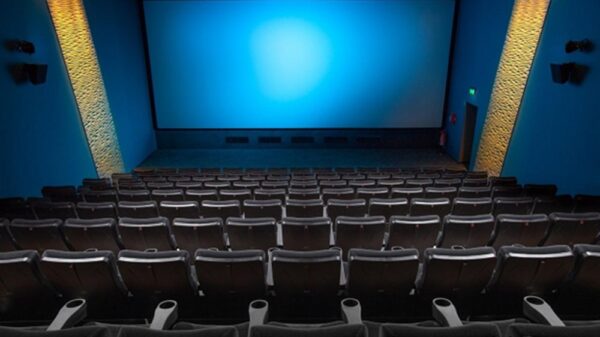
https://pixabay.com/photos/movie-theater-room-movie-2502213/
Poker and blackjack have long held a captivating allure in the world of cinema. These card games, with their mix of strategy, psychology, and high stakes, have become symbolic of suspense, intrigue, and the thrill of risk-taking. From smoky backroom games in classic noirs to glamorous casino tables in modern blockbusters, poker and blackjack continue to serve as compelling storytelling devices. Their enduring presence in movies can be attributed to a combination of dramatic potential, cultural significance, and the universality of their appeal.
1. The Drama of High-Stakes Gambling
It’s the same reason you and your buddies enjoy playing poker and blackjack at your favorite casinos. The thrill of defying the odds and emerging victorious is unmatched, especially when you extract the most value from your choices—whether it’s through smart betting, efficient bankroll management, or capitalizing on the right bonuses. Moreso, when you choose sites intended for gambling not on Gamstop, as they amplify this excitement, offering more flexible and engaging options compared to the overly regulated alternatives under Gamstop. These features make every hand and wager even more exhilarating.
Poker and blackjack are inherently dramatic games, making them perfect for cinematic storytelling. The tension escalates with every card dealt, every chip wagered, and every bluff called. These games thrive on a blend of luck and skill, creating suspenseful moments that captivate audiences.
For instance, poker often hinges on bluffing, where players must sell a false narrative to outwit their opponents. This psychological dynamic adds depth to characters and fuels dramatic conflict. In films like Rounders (1998), poker serves as more than just a plot device—it becomes a stage where characters reveal their intelligence, desperation, and resolve. Similarly, blackjack scenes in movies like 21 (2008) showcase the strategic nuances of card counting, creating a thrilling battle of wits between players and casinos.
2. Symbolism of Risk and Reward
Poker and blackjack are more than just games; they are metaphors for life’s risks and rewards. The decision to go all-in on a poker hand or to hit or stand in blackjack mirrors the choices characters face in their personal lives. These games often reflect themes of ambition, greed, and the desire for control.
For example, in Casino Royale (2006), the high-stakes poker game between James Bond and Le Chiffre serves as a microcosm of their larger battle of wits and wills. Each bet and counter-move is loaded with tension, highlighting their psychological duel. Similarly, blackjack scenes in Rain Man (1988) illustrate the combination of skill and luck, paralleling the characters’ evolving relationship and their attempts to navigate the challenges in their lives.
3. Glamour and Escapism
Movies often portray poker and blackjack in glamorous settings, from luxurious casinos to exclusive high-stakes games. This depiction taps into the audience’s sense of escapism, offering a glimpse into a world of wealth, sophistication, and risk.
Classic films like The Cincinnati Kid (1965) depict poker as a rite of passage, where the protagonist navigates the challenges of the game and earns respect in a male-dominated environment. In contrast, modern films like Oceans Eleven (2001) incorporate blackjack and poker into heist narratives, blending the thrill of the games with the excitement of elaborate schemes.
This glamorous portrayal contributes to the games’ appeal, making them aspirational symbols of intelligence, confidence, and success. Whether James Bond suavely plays poker in a tuxedo or a group of college students beats the odds at blackjack, these scenes offer a sense of excitement that resonates with audiences.
4. Universal Appeal and Accessibility
Poker and blackjack are universally recognized games, making them easily relatable to audiences worldwide. Unlike more niche or complex gambling games, the rules of poker and blackjack are straightforward enough for most viewers to follow. This accessibility ensures that the stakes and outcomes are immediately understandable, heightening the emotional impact of these scenes.
For example, a well-timed bluff in poker or a strategic decision to double down in blackjack is instantly recognizable as a bold move, even to viewers who may not play the games themselves. This familiarity allows filmmakers to focus on the emotional and narrative weight of the moment without needing extensive exposition.
Conclusion
Poker and blackjack remain popular in the movies because they offer a potent mix of drama, symbolism, and universal appeal. These games are more than just cinematic devices; they are arenas for exploring themes of risk, ambition, and human psychology. Whether set in gritty backrooms or lavish casinos, scenes of poker and blackjack captivate audiences by showcasing the thrill of the unknown and the skill of the players. As long as filmmakers continue to weave compelling narratives around these timeless games, their place in cinema is assured.
